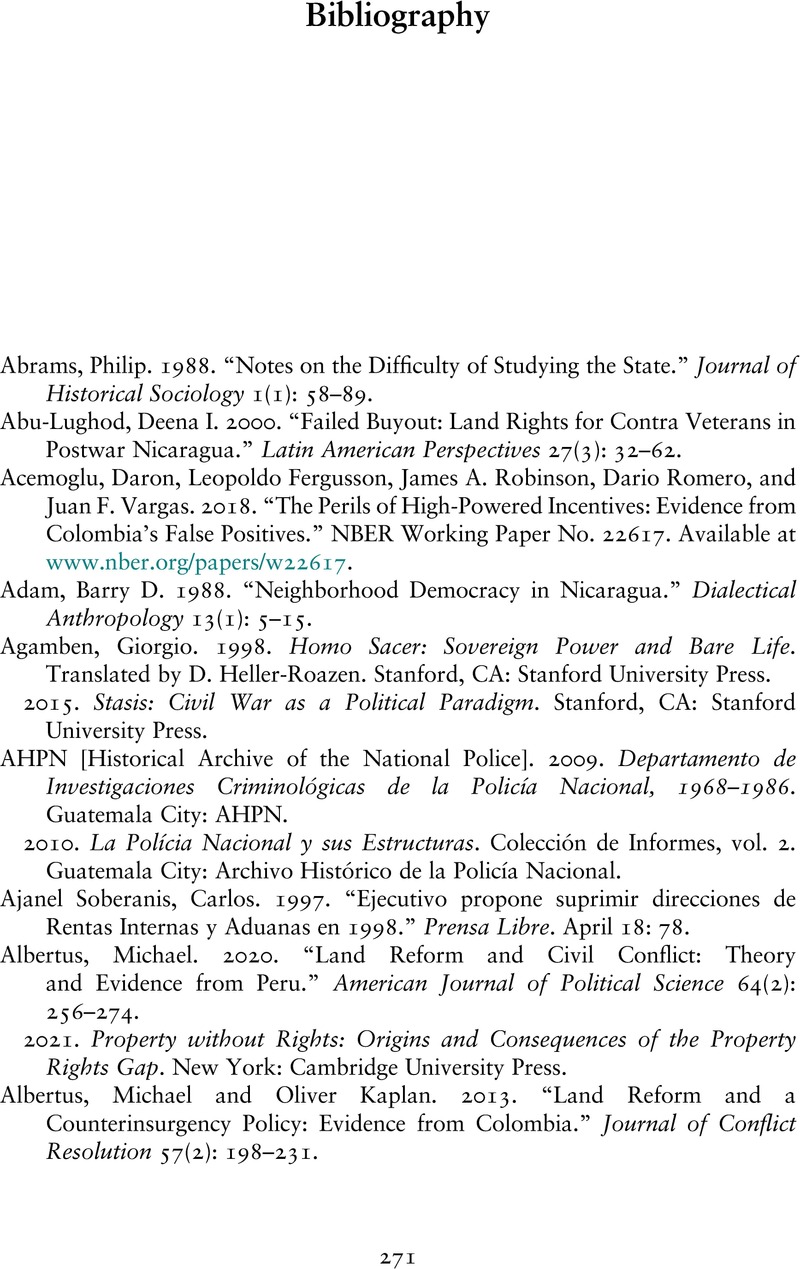Book contents
- Undermining the State from Within
- Undermining the State from Within
- Copyright page
- Contents
- Figures
- Tables
- Preface
- Acknowledgments
- Abbreviations
- Part I Foundations
- Part II Institutional Origins
- Part III Institutional Persistence
- Appendix List of Interviews and Archival Collections
- Bibliography
- Index
- References
Bibliography
Published online by Cambridge University Press: 23 February 2023
- Undermining the State from Within
- Undermining the State from Within
- Copyright page
- Contents
- Figures
- Tables
- Preface
- Acknowledgments
- Abbreviations
- Part I Foundations
- Part II Institutional Origins
- Part III Institutional Persistence
- Appendix List of Interviews and Archival Collections
- Bibliography
- Index
- References
Summary

- Type
- Chapter
- Information
- Undermining the State from WithinThe Institutional Legacies of Civil War in Central America, pp. 271 - 302Publisher: Cambridge University PressPrint publication year: 2023

